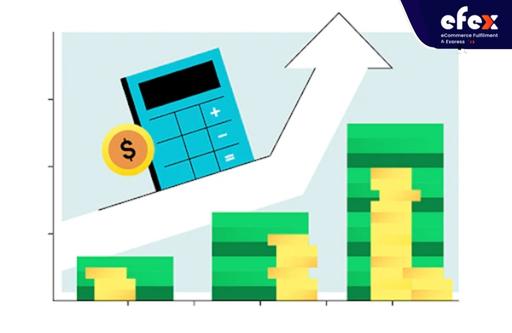
More Helpful Content
DPP or Direct product profitability is a crucial statistic that opens up room for high-turning items while closing down space for slower-moving and less profitable ones. That‘s why nowadays most retailers focus on direct product profitability analysis. With this in mind, we’ve put together the details of Direct product profitability including the definition, formula as well as 7 steps of the DPP process.
A measure of profitability for retail items and categories is called direct product profitability (or DPP). Retailers' assessments of profits on sales of a particular product include line items including storage, processing, and manufacturer's allowances, warranties, and financing schemes when calculating DPP. It is a calculation of the net profit made by a certain product that excludes the cost of the initial purchase in favor of other expenditures like distribution and retailing.
It refers to determining the real profit made by a merchant or distributor from a certain product after deducting handling and storage expenses. The outcomes are utilized in supply chain management, product selection, assortment planning, and shelf layout design.

DPP is a method of assigning each applicable cost to a specific product. Because of this, each distribution expense (storage, delivery, etc.) is attributed to a specific item rather than being averaged across the entire product line.
As a result, the actual costs of delivering a product are tracked and contrasted with a benchmark cost established using DPP, much to how a budgeting system functions. In this method, inefficiencies in the logistics process as a whole might be found.
DPP approaches can determine how much a certain product will cost a given client, which is vital information for developing efficient marketing plans. The advantage of DPP is that merchants may reduce the amount of shelf space for items that move slowly and provide lesser earnings while increasing shelf space for those that turn over quickly.
👉 Read More: Fixed Order Quantity: Model and Formula
👉 Read More: Cumulative Lead Time: Example And Calculation
A Direct Product Profitability (DPP) project's objectives are to:
With regard to direct product costs subtracted, this statistic measures the adjusted gross margin as
DPP (%) = Gross margin ($) - Product direct costs ($)
The fundamental DPP formula is

Retailers are focused on finding more effective methods to undertake profitability analysis in a multi-channel environment, and as a result, many are reevaluating the "cost-to-serve" studies. In order to offer a perspective of expenses and revenue by channel, customer category, store, and commodity group down to every stock keeping unit (SKU) if appropriate, this extends the scope of standard gross margin analysis to the net margin level. A typical high-level report produced by such analysis is shown in the diagram below.
For cost-to-serve analysis to be successfully implemented, a system must be able to swiftly manipulate huge volumes of data across several dimensions and enable users to easily access and apply the non-financial factors they require when allocating expenses. But in recent years, a lack of suitable solutions has impacted costs and profitability.
The net profitability of each fast-moving goods or services may be determined using the DPP model. The 7 steps involved in using the DPP model are as follows:

- Read More: What is Direct Store Delivery(DSD)? Example and Model
The software assigns direct costs and overheads using a variety of approaches, including activity-based costing. The option to operate at any degree of granularity, from a single SKU to a product category, is provided to users.
However, what actually makes it a successful app is how it combines a strict commitment to profit with the efficiency and precision of the platform: When a driver value is modified, a real-time model allows merchants to compute the results immediately rather of waiting hours (or even days) as they would with traditional cost and performance reporting tools. Make it possible for important company stakeholders to work together and participate in conversations about how expenditures should be allocated to get outcomes that are considered "fair."
Understand the reasons why a product's profitability differs from one shop or network to another by doing a multidimensional analysis of the data. Bring about changes rapidly and evaluate their effects immediately to support ongoing business model improvement. Analyze quickly the effects of changes to the service model or supply chain on the revenue of the product. The need of doing a thorough cost-to-serve assessment has never been higher as retailers continue to adapt their operating models to incorporate multi-channel tactics.
👉 Read More: Item Coding: Definition And Benefits
👉 Read More: Item Master: Example And Best Practices
Direct product profitability measurements are helpful for making decisions about price, display, and marketing campaigns in addition to evaluating the efficiency and profitability of specific products and category sales. Putting more attention to DPP analysis will truly direct your company to the right way for profitability and development. Hope you have a good time with Efex.


